There is nothing more bucolic and familiar in our imagination of a farm than the image of milking a cow by hand into a bucket, and then pouring a glowing glass of milk for two or three smiling children. How charming. How American.
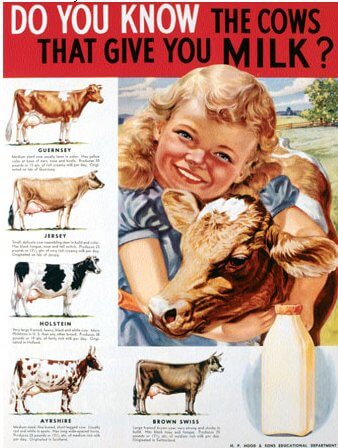
There is a serious disconnect between that image and the reality of today’s dairy industry. Despite that deceptive fantasy, promoted by dairy companies and Little House on the Prairie books for decades, it was illegal to sell milk straight from the cow for most of the 20th century.
In response to that disconnect, more and more people advocate for drinking raw milk—milk that hasn’t been heated to kill bacteria. These advocates claim that raw milk provides numerous health benefits, that it is more nutritious, that it prevents allergies and even cures acne.
Opponents, including the FDA and CDC, point to an increase in cases of food poisoning from raw milk in states where raw milk is legal to sell, and warn that children under 5 years old are at greatest risk for illness.
Those are some pretty high stakes for a decision about what to pour on your breakfast cereal. Let me help you unpack some of the science, law, and propaganda about raw milk and look at the… ahem, raw facts.
What Is Raw Milk?
Most milk that you buy in the grocery store has been pasteurized—that is, heated to 161 degrees Fahrenheit for 30 seconds in order to kill microbes—or ultra pasteurized, heated to 280 degrees F for 2 seconds. The invention of pasteurization in the 1880s dramatically improved health outcomes from milk consumption. For example, pasteurized milk reduced the transmission of tuberculosis to the point where no one today thinks of TB as a foodborne illness.
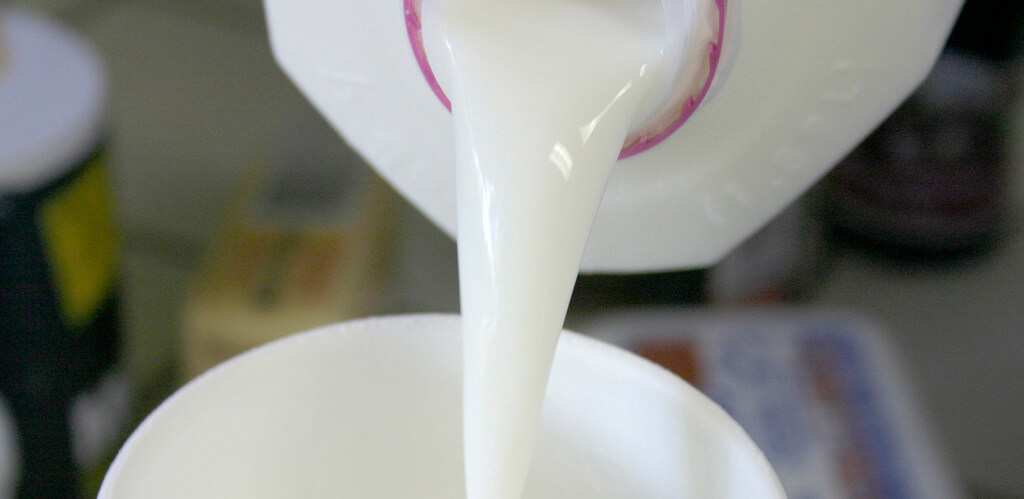
Pasteurization kills microbes, harmful and otherwise, but it also denatures active enzymes in the milk and distinctly changes the flavor. Raw milk, as the name suggests, has not been heated, and retains the more complex qualities of untreated milk.
More visible advocacy for raw milk began in 1998, when an organization called The Westin A. Price Foundation, launched the Real Milk campaign, with the goal of bringing raw milk back to consumers. The campaign stresses the natural qualities of raw milk, which they say are more beneficial to consumers than the health benefits of pasteurization.
All baby mammals, including humans and calves, get a unique combination of microbes from their mother’s milk. Microbes help inoculate the infant calf’s gut with healthy bugs, as well as living white blood cells, to support the calf’s immune system and hundreds of active enzymes. Pasteurizing the milk destroys many of these benefits, while eliminating the risk of illness from harmful microbes.
During a laboratory class in college, fellow students and I cultured raw milk products in agar. We then compared the resulting bacterial growth to pasteurized milk and other processed milk products, including “probiotics” like yogurt and kefir.
Let me tell you, those raw milk cultures were some of the fuzziest petri dishes I have ever seen. What we found was that of all the cultures, the raw milk had the most active and diverse microbial growth. As expected, the store bought pasteurized milk and yogurt saw very little. (Interestingly, commercial yogurt and kefir advertised as “probiotic” and “live culture” did not demonstrate much microbe growth either.)
Of course, the results of an experiment in one food science 201 class are far from conclusive, but there is no question that raw milk is chock full of active microbes. Today, in an era when fermented foods, probiotics, and beneficial microbes are soaring in popularity, that microbial profile is rocketing raw milk to stardom.
What Are The Benefits Of Raw Milk?
Common claims about raw milk include that it is easier to digest, is more nutritious, and that the microbes help populate our guts with beneficial bacteria, potentially reducing the risk of allergies. However, there is no reliable, peer-reviewed evidence that raw milk provides any health benefits other than what pasteurized milk can provide. That’s not to say they don’t exist, but modern scientific studies have yet to find them.
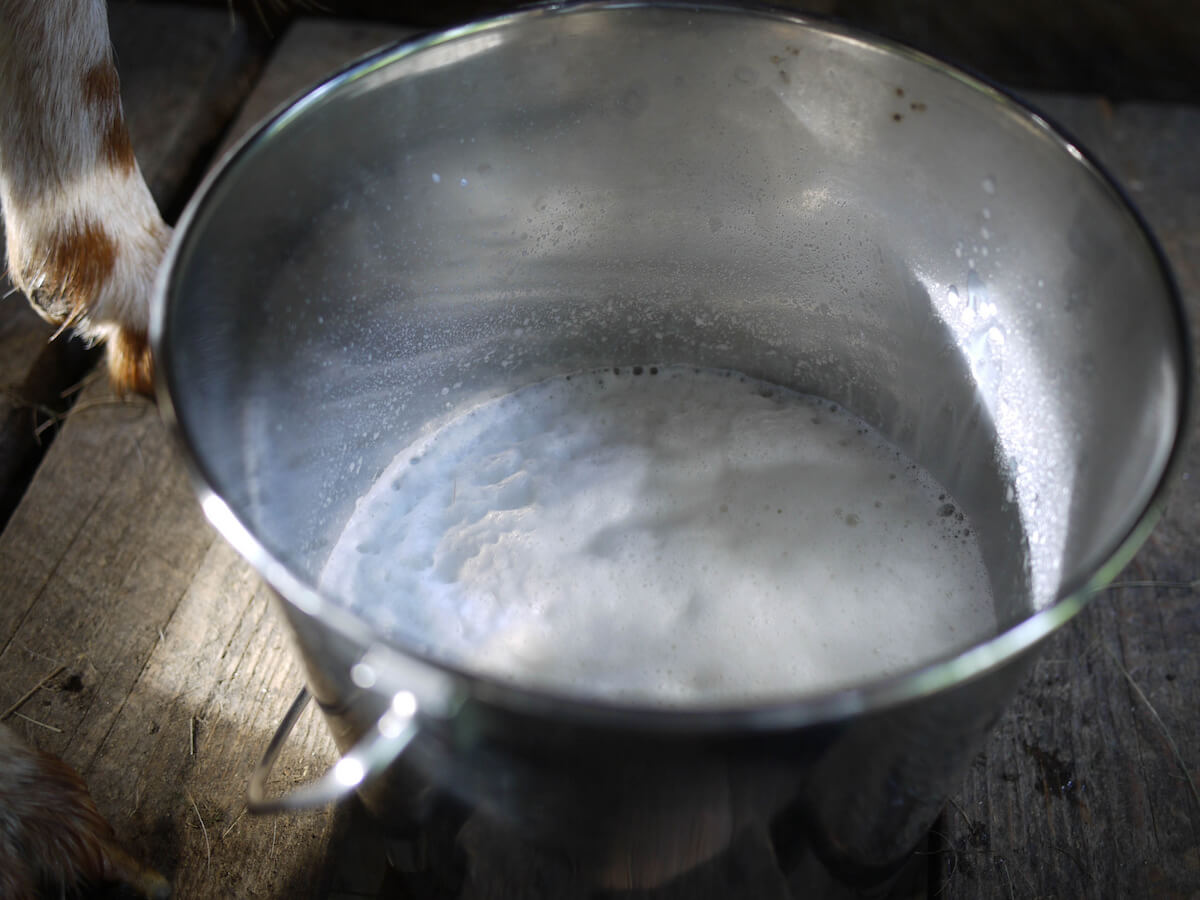
Digestion And Gut Health
Despite the intuitive claims that the enzymes and beneficial bacteria in raw milk help people with lactose intolerance to digest milk sugar, a study from Stanford found that not to be true. Scientifically speaking, that result is not surprising: it is not microbes in your gut that digest lactose, it is the production of the lactase enzyme, which milk, raw or otherwise, does not contain.
Do the microbes in raw milk aid digestion and support a healthy gut biome, like they do in calves? Possibly, but calves are ruminants—their digestion does not remotely resemble human intestines, and they need very different microbes to support their gut health. The hype about good microbes in milk has gotten mixed up with the hype about cultured, or probiotic foods.
It is true that fermented, cultured foods like kimchi, sauerkraut, yogurt, and kefir help support gut health, as long as you buy them from reputable processors. However, those foods have been cultured with specific microbes, which produce acid or alcohol in the process of fermentation to kill harmful microbes and preserve the food.
Lactobacillus is a common microbe used in both vegetable and dairy ferments in cultures around the world, and it is very important to the health of the human gut. However, the much more complex mix of microbes in raw milk does not resemble the probiotic cultures of fermented foods, since the whole point of a successful culture is that a few microbes outcompete the rest, and it is not clear that this influx of microbes from raw milk benefits the human gut.
Nutrition
What about nutritional content? Pasteurization changes the composition of some of the protein molecules, but does not change their ability to be absorbed into the body, nor does it change the mineral content of milk.
Pasteurization does potentially lower the levels of vitamins in the milk but not by significant amounts. For a strong vitamin content in milk the cow’s diet is much more important than the treatment of the milk.
The most nutritious milk is whole milk which comes from animals eating primarily grass or high-quality hay.
Flavor
However, unpasteurized milk has a couple of clear benefits that are not health-related. Heating milk changes the flavor profile, and many people who drink raw milk prefer the taste over pasteurized milk.
Raw milk is also highly prized by artisan cheese-makers. Since microbial communities are the foundation of cultured cheese making, the complex and diverse array of microbes in raw milk are a tool and a benefit for cheese makers.
The microbes create a more sophisticated and unique cheese, which cannot be perfectly replicated with milk from another cow at another dairy.
This unique, place-based quality is called terroir, and it is highly prized by artisan food craftspeople of all kinds, from cheese, to wine, to chocolate. Terroir is closely associated with unique microbial communities living in food, like raw milk.
People have personal preferences about milk as well. I know people who swear that raw milk is better digested by their bodies, and they know their own bodies best.
I have always found that raw milk upsets my stomach a little, which is also a common response in people who grew up drinking pasteurized milk, like me. There is no question that the active community of microbes in raw milk has an effect on the digestive tract, and people have to decide for themselves whether it is compatible with their body.
Is It Dangerous To Drink Raw Milk?
Humans in some parts of the world have been drinking raw milk for thousands of years, since the domestication of dairy animals, and it hasn’t yet caused the extinction of the species. On the other hand, pasteurization dramatically reduced illness and death from food poisoning and food-borne pathogens.
Today the Center for Disease Control strongly advises against consuming raw milk because of the health risks it poses. And let’s be clear, people do occasionally get sick from drinking raw milk from legal, regulated operations.
However, from 1998 to the present, no one has died from consuming raw liquid milk. The two deaths reported by the CDC linked to raw milk were both caused by raw queso fresco style soft cheese, one contaminated with salmonella, the other with listeria.
The most common harmful microbe found in raw milk is Campylobacter. It causes diarrhea, and isn’t life-threatening except in those with weakened immune systems. Other pathogens associated with raw milk include E. coli, salmonella, and listeria. All these microbes are common in livestock operations like dairies.
Cleanliness At Raw Milk Dairies
Professional raw dairies know the risks associated with their product, and do everything possible to minimize the danger. All dairies should be clean, but raw dairies should to be spotless.
A female dairy farmer who sells raw milk told me, “If I can’t wear my pink fuzzy house slippers into my milking parlor, it’s not clean enough.” Of course, a building can be clean enough to eat off the floor, but the minute you walk a cow into that room, she brings two thousand pounds of microbe covered farm animal. And she’s probably going to poop while you’re milking, just because she can. (I speak from experience).
However, commercial dairies use vacuum milking machines, which suction onto the cow’s teats, so the milk is never exposed to the air (or to cow poop) while milking. This dramatically reduces exposure to microbes.
The most important thing is to ensure that the cow’s teats are cleaned and sterilized before milking begins, and of course, that the equipment is clean. I can confidently say that no one is milking into an open bucket for commercial sale of raw milk (or for any other kind of milk for sale for that matter). That technology, combined with a strict standard of cleanliness, can provide confidence in the safety of raw milk.
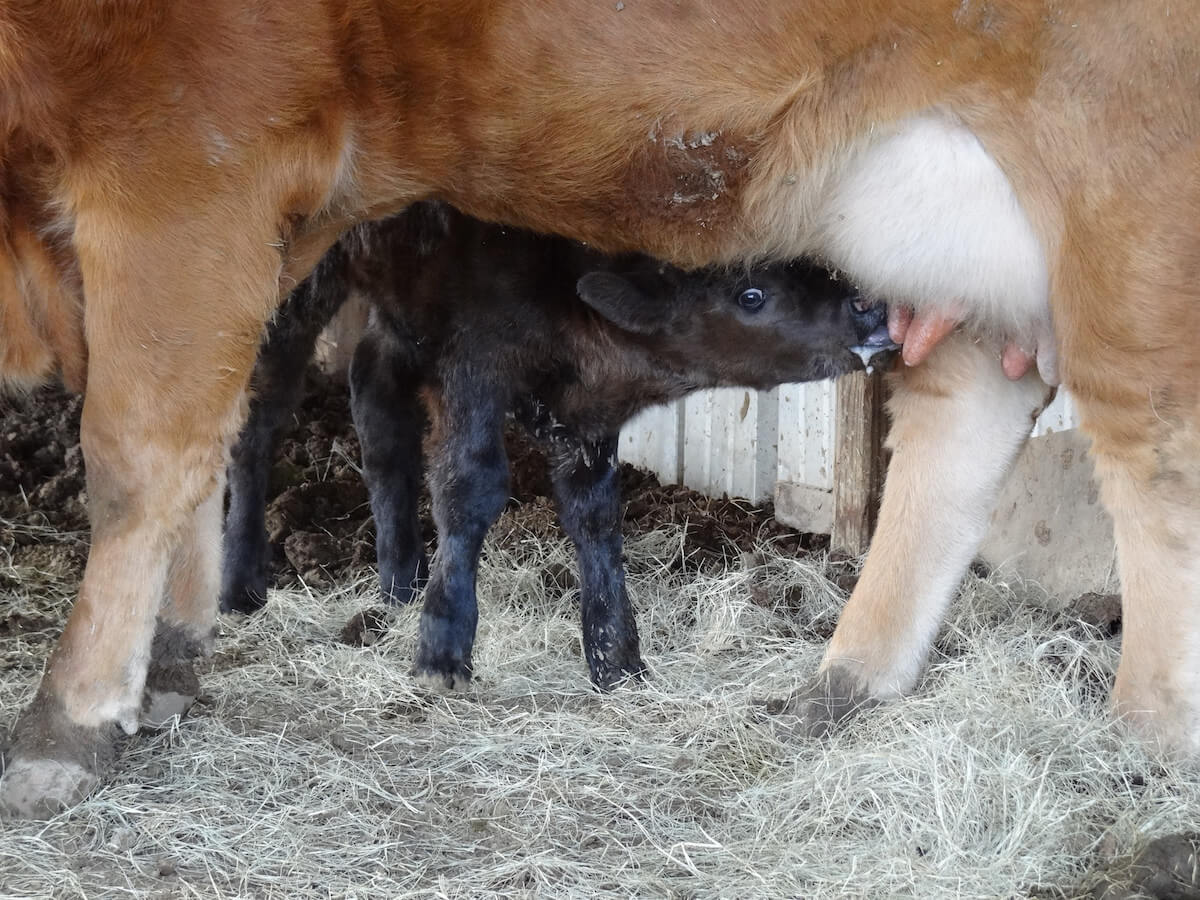
The bottom line is that there is always a risk of microbial contamination in raw milk. However, a responsible and educated farmer running a clean and well-regulated operation can reduce the risk of milk-borne illness significantly.
It is also worth noting that the two most deadly outbreaks of food poisoning in recent history have been from fenugreek sprouts, and cantaloupe, so really, nothing is ever truly safe and it’s not worth living in fear.
What Are The Laws About Raw Milk?
If you own a cow, there are no regulations about how you process and drink her milk. But as soon as you want to sell raw milk, you get into complex legal territory. Sales of raw milk are regulated state by state in the US. Every state has different regulations, enforced by that state’s Department of Agriculture.
Permissive States: Farms Can Sell Milk
In the most permissive states, like Washington and California, raw milk dairies can sell to retail establishments, at farmer’s markets, or through any other licensed retail venue. Other states are slightly less permissive, and only allow raw milk to be sold on-farm.
Restrictive States: Herd-Shares Or Outright Bans
Still others, like Michigan and Colorado, allow raw milk sales but only through a herd-share arrangement. Multiple households to own shares of a cow, and the cow’s milk can be distributed to shareholders without being subject to additional regulations. In 16 states, it’s illegal to sell raw milk for human consumption. As tempting as it might be to buy milk from your neighbor in one of these states, do so at your own risk.
Check out this interactive map for state-by-state details on raw milk laws.
Ultimately, if you live in an area where you can buy raw milk legally, the choice about what is best for you and your family is entirely yours. Many people find raw milk more delicious and satisfying than pasteurized milk.
It makes people feel closer to the animal from which it came, and for people who milk their own animals, it’s frankly a lot less work to skip pasteurization.
My partner and I own a Jersey cow. We have always chosen to pasteurize her milk. For a while I felt like I was losing points as a foodie and a farmer when we did that, but in the long run, it was just the choice that worked best for my body, and our peace of mind.
The balance of science is against raw milk, because there are clear-cut cases of illness without clear-cut benefits on the other side of the scale. But, the bottom line is that raw milk from a licensed, inspected dairy is not much more dangerous than any other raw food. So don’t be afraid to try it, and see what works for your body and your family.

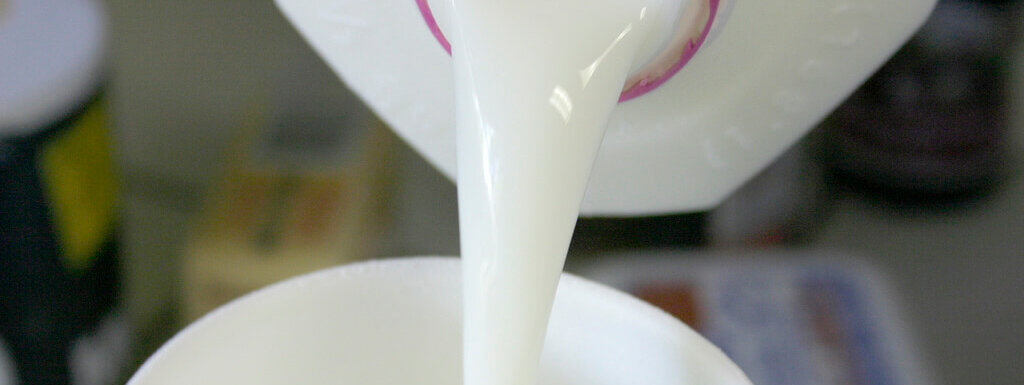





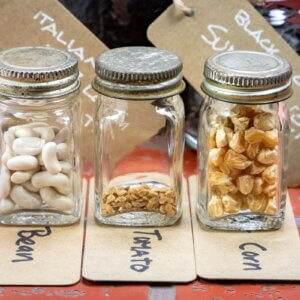


































“Science” in this country is rigged: The “studies” are all funded and promoted by Big-Ag Special Interests and their allies in Big Government (FDA, CDC, USDA). There has never been an honest, blind study done on the real health benefits of CLEAN raw milk vs. clean pasteurized milk. All the studies done so far have been funded by Big Dairy to make raw milk look bad and pasteurized milk look better than it is. It is not real “science” if you have a pre-determined outcome that you are trying to “prove.”
Fact: Humans EVOLVED drinking RAW MILK. We did not evolve consuming pasteurized anything. A healthy human gut can deal easily with the digestion of a couple of bad pathogens; in fact, our present obsession with antibacterial soaps and vaccines and taking drugs for every little sniffle has weakened modern human immune systems. This has all been brought about by the collusion of Big Government with Big-Ag and Big-Pharma to deliberately make us sick so we have to buy more drugs and fake “cures” from the pharmaceutical industry so they can increase their profits while we humans get sicker and sicker by consuming their Franken-Foods.
Raw Milk from small, clean, grass-fed dairies is perfectly safe and healthy. Comparing such raw milk today to the TB-causing raw milk of Victorian-Era NYC where the streets were covered in human and animal excrement along with petrifying garbage on every corner is wholly illegitimate. Yes, if the Milkmaid has TB, then she will spread it to the milk.
Fact: If PASTEURIZED MILK comes in contact with a pathogen, then that pathogen will reproduce more rapidly through a container of dead pasteurized milk than it would though raw milk, since at least in a container of raw milk the pathogens have to compete against all the good bacteria.
This is why clean raw milk is safer overall – it is kept clean AND COLD from cow to bottling to storage to sale. Big-Ag dairies are not very clean, the processing is not as rigorous because it doesn’t have to be since it all gets combined with milk from numerous other Big-Ag dairies and then batch-pasteurized to kill everything. And then, it gets delivered to the stores and SITS OUT in crates FOR HOURS before it is brought into the stores in the morning. That is why there are two sell-by dates in Metro NY; the NYC date is two days earlier than the surrounding areas because NYC is hotter and dirtier. Weird, since the milk still sits out for hours in the suburbs too.
If you buy your milk at Walmart or any other big store, then no, it should not be raw – it MUST be pasteurized. But if that’s the kind of “milk” you buy, then you’d be better off drinking coconut “milk.”
FACT: Clean raw milk safely sours after a few days. It can still be consumed, as long as it does not go moldy (indicates bad bacteria got in it). That is how Clabbered Milk and real Sour Cream are created. If good raw milk starts to taste sour it is fine to drink or even allow to curdle further. I’ve safely consumed it over a week after milking.
Pasteurized milk, on the other-hand, never sours – it ONLY SPOILS. If it smells bad or tastes funny – throw it out regardless of date; it has been contaminated. Be safe and throw it out if it is more than two days past the sell-by date; three days if it has never been unsealed and still looks and smells good.
Low-Temp pasteurized grass-fed milk in glass bottles is the trickiest of all. It spoils really fast; usually before the use-by date. But that is the easiest real milk to purchase near me. But it never sours, it just spoils (off smell) really fast. Even if kept in a 36 degree fridge. That is why I do not believe the “pasteurizing is better” argument.
Any legitimate “study” on raw vs. pasteurized milk would have to compare grass-fed to grass-fed. By default, GRAIN-FED ruminant milk MUST BE PASTEURIZED, since RUMINANTS CANNOT DIGEST GRAINS. Grain-Fed Big-Ag milk is loaded with pathogens before the milk even exits the udders because the guts of those cows are sick from being fed non-digestible feed.